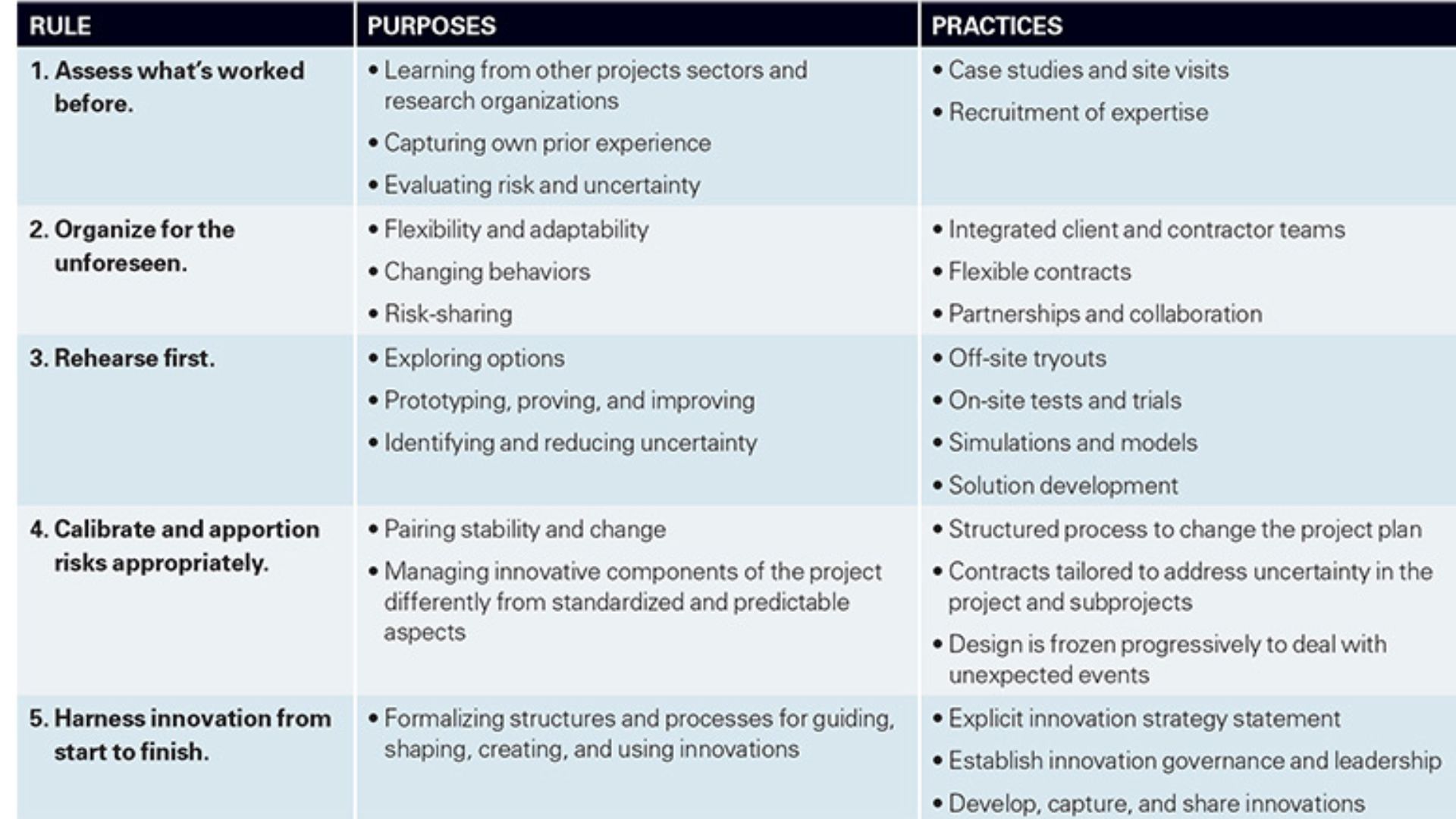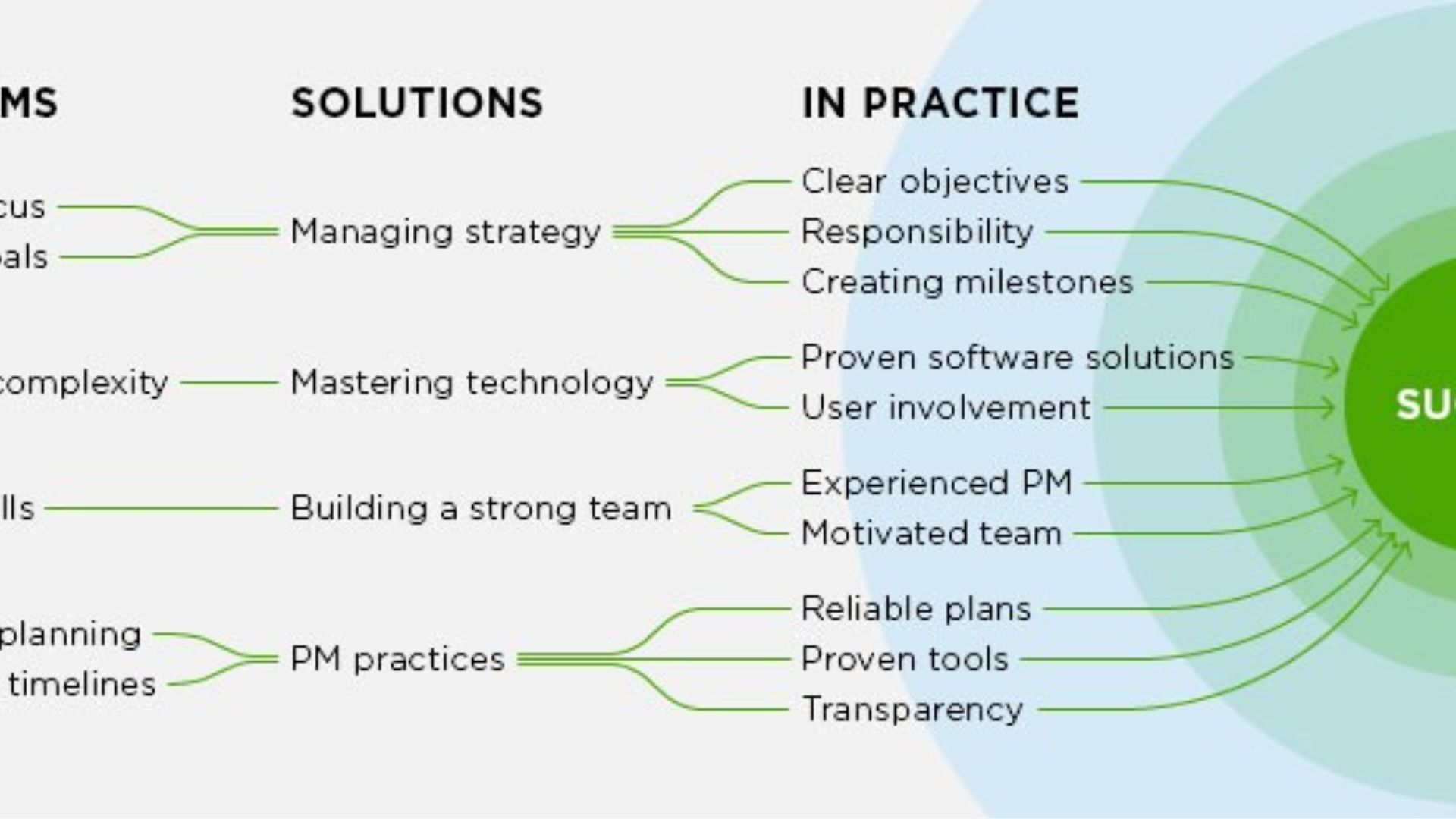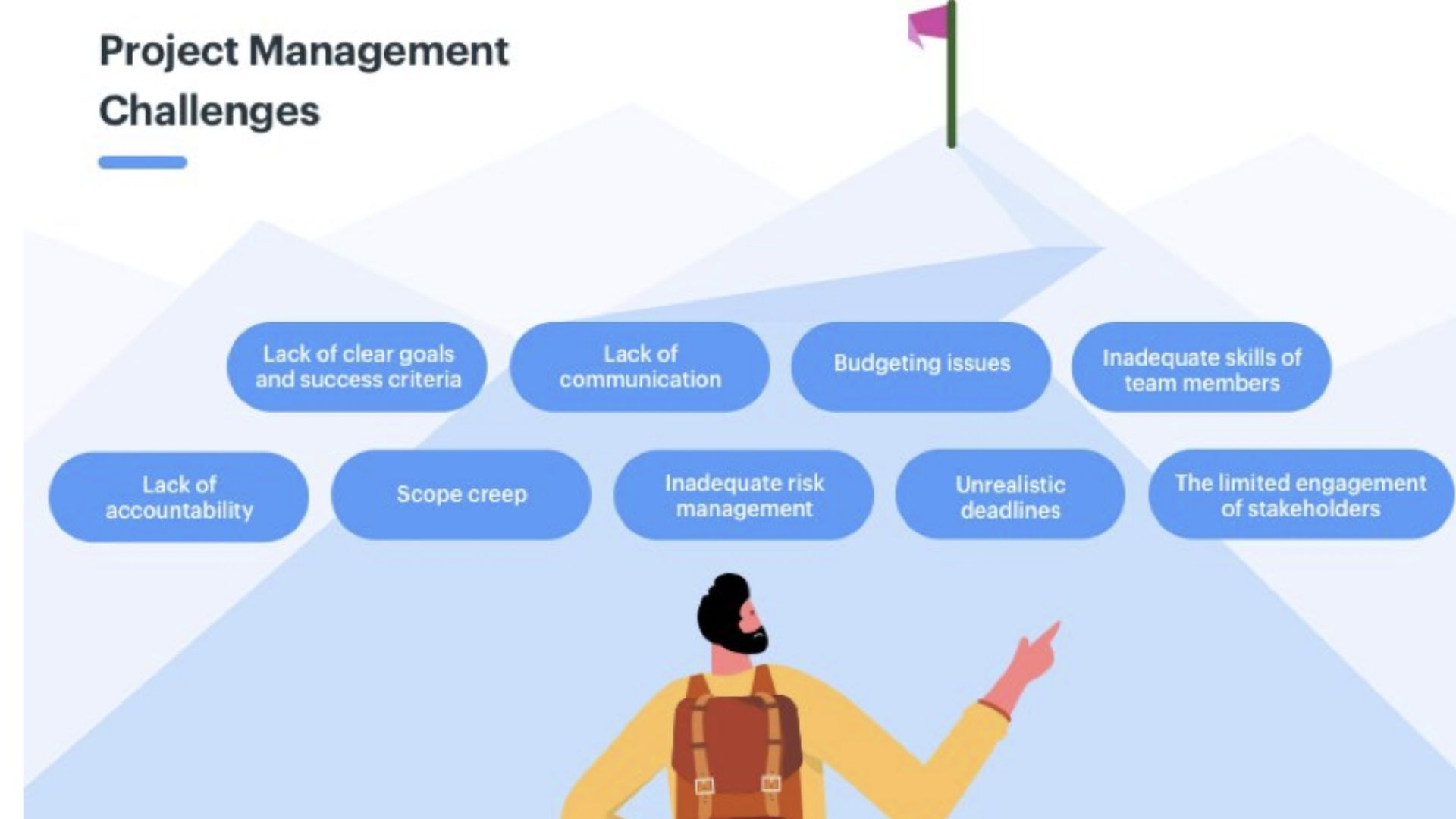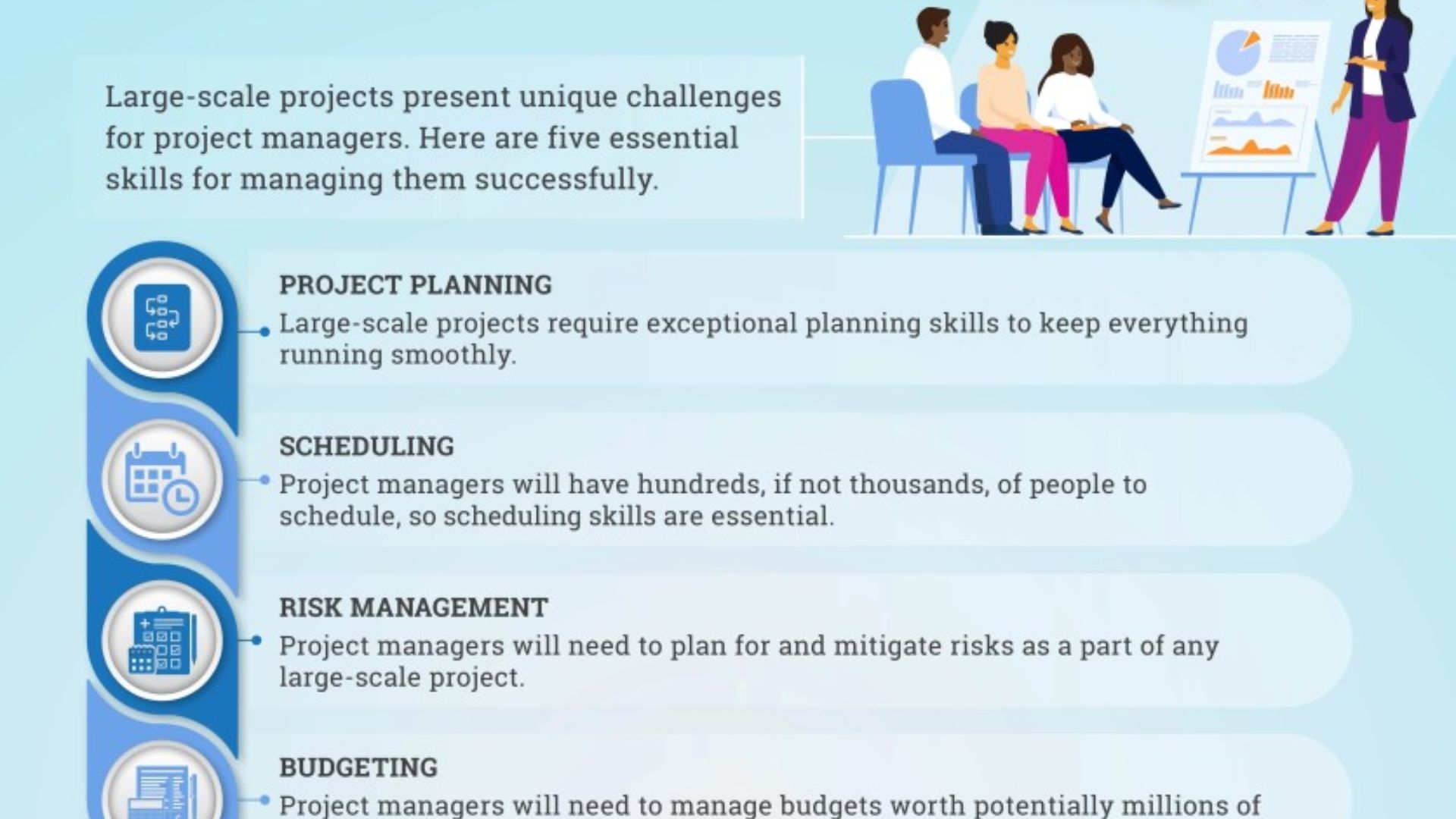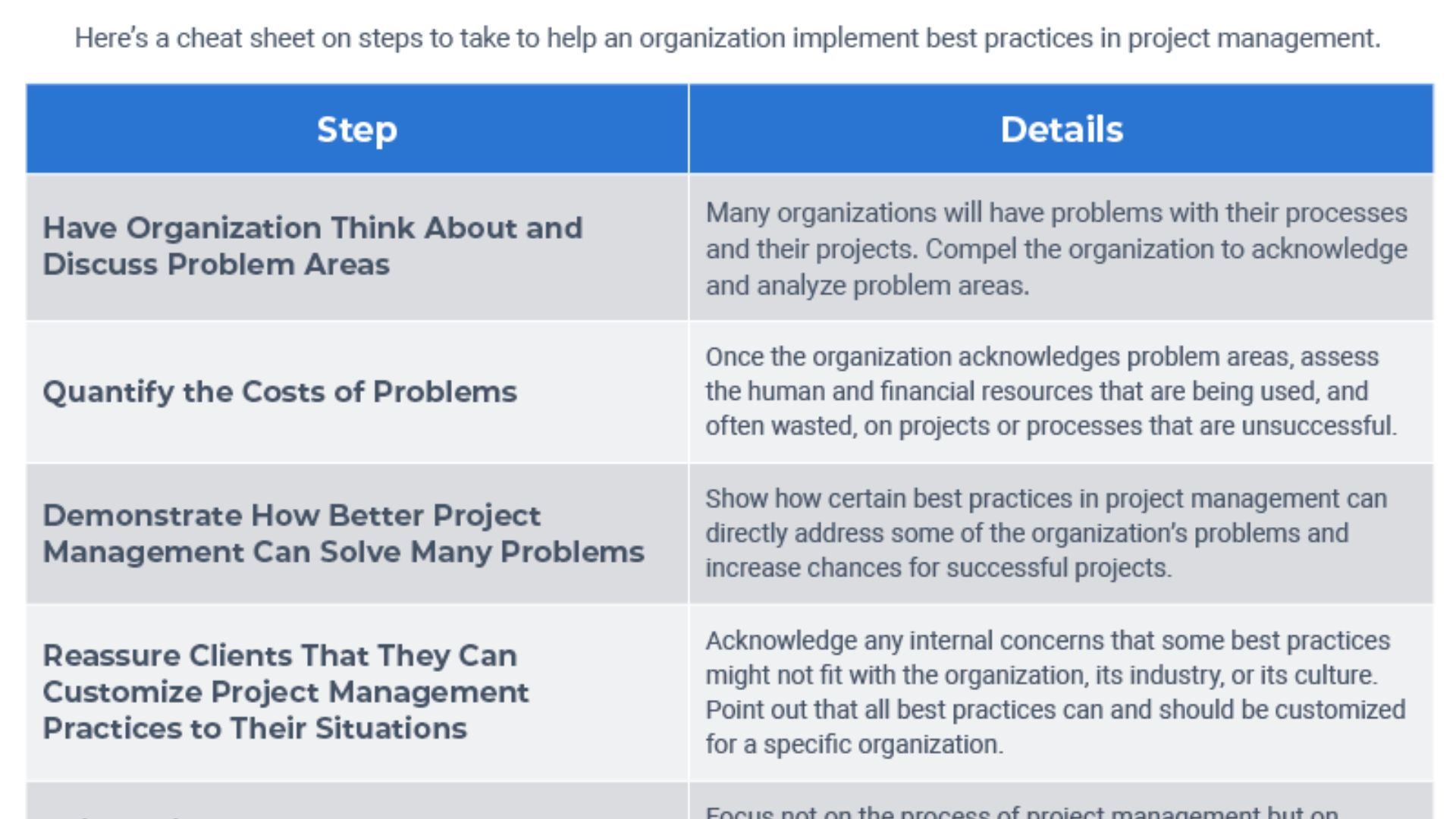
Significant undertakings can occasionally take time to complete. Success is worth it if everything goes according to plan, but the stakes are significant. What if it doesn't, though?
The study, which McKinsey and the University of Oxford carried out, found that big projects typically go 7% over schedule and 45% over budget. Furthermore, they have discovered that the likelihood of the project going over schedule increases with its duration. Furthermore, 17% of these mishaps have the potential to jeopardize a business's continued survival.
It would be best if you planned a significant project's timeline and deliverables to prevent issues with the finished output. Major projects, therefore, have a number of phases that need to be coordinated in order to meet customer demands.
Some of the best practices for large-scale project managementare listed in this article. By adhering to these guidelines, you can ensure that any large-scale project will be finished on schedule and without sacrificing quality.
What Is A Large-Scale Project?
Large-scale initiatives vary significantly since they are all dependent on the organization. Application size, team size, data load, traffic, budget, and duration are some of the variables that determine it.
One endeavor is bigger than the other. Any business might consider a project to be large-scale if it starts little and eventually aims to build something more significant. Nonetheless, a large-scale project has specific shared characteristics.
- Performance - A large number of user requests and transactions may be handled per second by large-scale projects.
- Scalability- Another essential component of a large-scale project is its capacity to grow. Any project you plan to work on needs to be able to accommodate a large user base. That depends on what you're doing, both at the database and server levels. MySQL might only be compatible with some use cases going forward. Thus, you could switch to NoSQL.
- Availability- It's always accessible.
- More significant team sizes and extended timelines- usually including several team members for various task objectives and lasting at least six months, but probably a year or more.
General Project Management Skill
Large-scale projects are complicated; thus, in order to succeed, project managers need to have a variety of broad project management skills that are primarily focused on characteristics and behaviors. Among them are the following.
Organization
It might be challenging to manage people and resources, yet project managers are frequently needed to arrange for this. Project managers need to be aware of the goals of a project and know how to divide them into manageable tasks.
Organization is the capacity to produce order out of chaos. They have to set priorities, create compartments, and closely monitor and record every task.
Detail Orientation
Large-scale projects can need consideration of hundreds of variables. Understanding each of these elements, as well as how they interact and overlap, is the responsibility of the project manager.
In the course of a project, the most minor details occasionally result in a breakthrough or a hindrance. Project managers need to be highly attentive to every little detail.
Being A Team Player
Project managers frequently have to keep everyone (and everything) together during a project. To achieve this, they must be aware of the viewpoints of team members and make sure everyone collaborates to finish the job successfully.
Project managers need to seek and share feedback aggressively. They must be at ease assigning and receiving work from others, as well as having faith in the caliber of their teammates' output. It is only possible to finish large-scale projects with the team functioning as a unit.
Flexibility
No matter how carefully a project is planned, unavoidably, something will go wrong, or circumstances will alter.
When they do, instead of stubbornly adhering to the original plan, the project manager must adjust to the new situation. A crucial project management talent is the capacity to assess an environment swiftly, determine what could be wrong, and make necessary adjustments.
Adaptability
In keeping with flexibility, project managers have to be able to adjust to changing conditions or shifts in resources as well as pivot or alter course as necessary.
Flexibility in a project manager must also include the capacity to collaborate with stakeholders and team members from other departments within the company, as well as those with varying degrees of responsibility and skill sets.
Strictness
Projects are often if only sometimes, managed under strict time constraints, money constraints, and minimal margin for mistakes.
However, mistakes are made frequently, and when they are, there is little time for protracted discussion or ambiguity about the best course of action. Project managers need to be quick thinkers, possess the confidence and expertise to act quickly, and have access to information at all times.
Sturdiness
An essential part of every big project is dependencies. Just as team members need to rely on one another to see a project through to completion, tasks frequently depend on one another. Project managers need to be dependable in accepting ultimate accountability for the projects they oversee on behalf of stakeholders and team members.
Project managers need to be at ease with taking responsibility and prepared to stand up and make important choices when called upon. Project managers are ultimately responsible for projects.
Commitment
Large-scale initiatives can take a lot of time and energy, and they sometimes include stressful and pressured times. Project managers need to have a solid commitment to the project's goals.
They must be willing to put in the necessary time and effort into a project and be prepared to go above and beyond to see it through to completion.
Devotion
Dedication is accompanied by commitment. In order for a project to succeed, its managers must be dedicated to it, which calls for their active participation and encouragement of others to follow suit.
Project managers need to be dedicated to adopting the best advice from the project team and acting in the best interests of the project, with the sole goal being the project's success.
Positivity
Not merely from an organizational and planning standpoint, project managers are the glue that keeps projects together. As was already noted, members of the project team may experience pressure and strain when working on large-scale initiatives.
These kinds of projects are also not usually one-way trips toward success. Project managers ought to maintain the team's concentration on the end objectives while offering support and encouragement throughout the process.
Identifying Potential Risks In Large-Scale Projects
One of the most critical steps in large-scale project management is to identify possible risks in order to ensure project success. These initiatives are particularly vulnerable to a variety of hazards due to their complexity and breadth, including logistical difficulties and unanticipated external variables.
Effective risk identification contributes to effective resource allocation, time management, and mitigation of any adverse effects.
Understanding The Nature Of Risks
- External Risks- These are risks that originate outside the organization and are beyond its direct control. These comprise shifts in the political landscape, the economy, the environment, and market dynamics.
- Internal Risks- These risks arise from within the project or the organization. These may be connected to organizational culture, resource constraints, or project management procedures.
- Technical hazards - Using new technology or depending too much on specific technical procedures carries some technical hazards. They consist of problems with innovation, technological setbacks, and integration.
Risk Identification Techniques
- Brainstorming - By utilizing the group's combined knowledge and experience, brainstorming sessions with stakeholders and team members can aid in identifying hazards.
- Historical Analysis - Examining previous projects, especially ones with comparable dimensions and characteristics, offers important insights into possible hazards.
- Expert Consultation- The project team can identify hazards that take time to be evident by consulting with experts in their respective professions or industry experts.
Risk Assessment And Categorization
After dangers are identified, their likelihood and possible impact should be evaluated. Effective resource allocation and risk prioritization are made more accessible by this evaluation.
- High Probability, High Impact- Risks that are most likely to happen and have a significant impact should be given top priority for quick attention.
- Low Probability, High Impact - Although less common, these dangers have the potential to have a significant impact and necessitate emergency preparation.
- High Probability, Low Impact- These hazards are usually controllable with standard procedures and don't call for a lot of resources.
Incorporating Risk Identification In Project Planning
Identifying risks needs to be a continuous process that lasts the whole project. New risks might appear as the project develops, and current hazards could alter in character and significance.
- Frequent Review Meetings - Organizing frequent risk assessment meetings guarantees that fresh hazards are found, and current ones are reassessed.
- Including Project Milestones- By connecting risk review meetings with project milestones, you can make sure that risk assessment is an ongoing component of project management.
Identifying possible hazards for large-scale projects is an ongoing, dynamic process. It entails comprehending different kinds of risks, using practical methods for risk detection, and incorporating risk management into the project plan as a whole.
Project managers may significantly increase the chance of project success by prioritizing and aggressively addressing these risks.
Best Practices For Project Management To Skyrocket Your Large-Scale Project
Clearly Set Your Goals
Setting specific objectives for your projects gives you a clear vision that keeps your duties aligned through to completion. Beyond that, there are other advantages to having well-defined objectives. These consist of:
- Orienting your gaze
- Specifying the smaller benchmarks
- assigning tasks to others
- Putting everything in one place
- Defining the plan, which increases the perceived attainableness of the tasks or objectives.
Now that you know the main advantages, here are some strategies for establishing specific objectives in a project;
- Establishing the project's goals should come first.
- Goals should always be divided into smaller benchmarks. This will sustain team motivation and facilitate improved goal attainment.
- Make sure your objectives are quantifiable.
- Also, you have to set goals that correspond with each team member's abilities. For example, assign a goal involving graphic design to a team member with graphic design expertise.
Success depends on you focusing on your vision and goals at the same time. Ford not only founded an automaker but also had a vision that was ahead of its time.
By concentrating on his objectives and having confidence in his motivations, he transformed the car business and left a lasting impact.
Managing Strategy
Businesses frequently make the same error: they prioritize meeting deadlines and budgets over efficiency. While managing on schedule and staying within the budget are undoubtedly crucial, figuring out the most effective approach can save you money and effort.
In real terms, this means cutting out as many pointless activities as you can. It is a good idea to get client feedback faster. It is also beneficial to get superior marketing data. Try breaking your significant objectives down into smaller ones and adding some milestones to help you reach them more easily.
The stakeholders' skill sets also influence the plan. They have to consider the long-term advantages of the purchase instead of being swayed by the price, which happens far too frequently.
The project will be one step closer to success if the executives, vendors, partners, and regulators choose the arrangements that make sense rather than just the cheapest ones.
Use Collaboration Tools
Fostering effective communication is one of the most challenging problems that come with managing massive projects. When members of your team use technologies designed for collaboration, they are able to simplify their communication and increase the likelihood that they will meet deadlines.
Many teams use tools for video conferencing because they make it easier to allocate duties, provide updates, and give explanations. They may also utilize scheduling systems to synchronize their calendars and direct messaging platforms to facilitate talks that take place in real-time.
When deciding which technologies to utilize for collaboration, consider developing guidelines to guarantee that staff can interact effectively.
If a member of your team is going to be absent from the office, for instance, you should remind them to adjust their status on any direct messaging services they use. You might also propose to employees that they utilize email to deliver lengthier and more official communications instead of phone calls.
Eliminate Assumptions And Promote Clarity
Recall that humans still exist, even the most accomplished experts. Errors, disagreements, and poor communication are inevitable aspects of existence. Avoid assuming anything, and make sure all project information is explicit, well-documented, and shared with the team if you want to be a great project manager.
Good teamwork is essential, and project managers may help with this by giving the group a forum to discuss common knowledge, confirm assumptions, and work together effectively. Here are some helpful guidelines to remember:
- Put accuracy first - Ensure that any written correspondence—whether sent via Slack or email, is accurate and trustworthy. Your words will be crucial to your team's ability to organize and complete assignments.
- Meeting recap - Following sessions, distribute an overview of essential choices, next steps, and deadlines. Indicate any information that needs to be added or explained.
- Ask for confirmation - Even if it's simply an emoji response, get confirmation from your teammates.
- Continue to be consistent- Whether it's an agenda presented prior to a meeting, a weekly email, or a post-meeting reflection, maintain consistency in your communication.
- Keep everything documented - Refrain from assuming that your staff is aware of everything you do. Even seemingly minor information should be recorded since they are prone to being overlooked or lost in the chaos of several sessions. Long-term team frustration might result from frequent conversations or unfulfilled intentions caused by a lack of documentation.
Minor details can occasionally get lost when a project manager expects that everyone on the team is aware of the same information they are. In a meeting, a quick comment on a task that is coming up could seem so obvious and memorable that you would assume no one could forget it. But that little choice might easily get lost in the clutter as time goes on and additional meetings take place.
Over time, the team may become frustrated if these seemingly little details need to be documented since they may find themselves going over the same topics again and again.
Worse, worse, they may forget entirely that a strategy had already been established. Thus, no matter how apparent it may appear, always remember to record and distribute information to keep your team in sync and moving ahead efficiently.
Creating An Effective Budget
When working on a large-scale project, it is imperative to create and adhere to a budget. You need to talk about the project's budget with the executive body.
A project manager's primary duties include allocating money to the various resources and project phases. For this reason, having enough money from the beginning usually makes project management more effortless.
Fund releases that are supported by accurate estimates and reports may be easier to control. Therefore, in order to avoid any problems with the distribution of funds, you must establish a sufficient budget from the beginning of the project.
Conduct Regular Check-Ins
You can gauge the success of your team by using check-ins. You can find out if staff members are fulfilling deadlines by setting up frequent meetings. Team members who are falling short of their targets might benefit from training or new approaches to help them become more productive.
Occasionally, you could see that their objectives could be more attainable and be able to modify them accordingly. Frequent check-ins are another valuable strategy for maintaining team concentration. Workers are able to stay productive by bringing up issues and seeking clarification.
Encourage team members to contribute ideas to enhance the project's functioning. For example, during progress meetings, the project manager may see that the customer is distracted. Based on this insight, move progress meetings to a time when the customer has more free time so they can give your staff their whole focus.
Frequently Asked Questions
What Is A Project Management Best Practice?
Keeping an extensive project diary with thorough justifications for each action is one of the finest project management techniques.
How Does Technology Play A Role In Managing Large-Scale Projects?
Large-scale project management benefits significantly from the capabilities that technology offers for improved data management, collaboration, and project tracking.
What Strategies Are Essential For Effective Team Leadership?
Delegating roles, empowering team members, and maintaining open lines of communication are all necessary for effective team leadership in big projects.
Conclusion
The use of best practices for large-scale project management is essential for overcoming the difficulties and complexities that come with such undertakings. These methods cover a wide range of tasks, such as strong team leadership, strategic technology utilization, thorough risk management, and efficient stakeholder management.
Through the use of proactive planning, clear communication, and flexibility, project managers may significantly increase the probability of project success.
Putting these techniques into practice guarantees not only the effective use of resources but also the development of a responsive and cooperative project environment, both of which are necessary for addressing the complex and dynamic character of large-scale projects.
